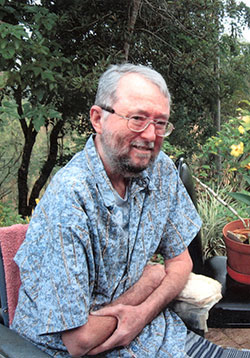Archive of past Queensland Entomologists
| A | B | C | D | E | F | G | H | I | J | K | L | M | N | O | P | Q | R | S | T | U | V | W | X | Y | Z |
Ross Ian STOREY (1949-2008)
Ross Storey was born in British Columbia, Canada, and grew up in Vancouver and attended nearby Victoria University. Graduated with B.Sc. in 1970 with a strong interest in scarabaeinae dung beetles. Came to Australia in 1971 to explore the fauna and seek work. Engaged as research assistant by Dr Peter Blood at University of Queensland to work with sheep blow fly (1971-72) and later by Dr Elizabeth Exley to assist with work on native bees (1973-75). Collected across northern Australia with the latter. Appointed experimentalist at DPI Mareeba in 1976 and remained there for the rest of his life. Developed major reference collection at Mareeba and assisted on crop pest projects involving tobacco, lychees, mangoes, etc. Collaborated with periodic Canadian scarab colleague visitor, Henry Howden, on projects on dung beetles and Histeridae. Collected extensively in the north, described many new genera and species and had 59 spp. named in his honour. Awarded North Qld Award for Excellence from the Aust. Inst. of Agriculture 1994, and the Whitley Award for book Field Guide to Australian Insects co-authored with Paul Zborowski in 1995. Served as News Bulletin Editor of Entomological Society of Queensland (1973-74) and was Regional Councillor of Australia Entomological Society for many years and convened the Society’s Cairns conference in 1993.
Biographies: Monteith, G.B. 2010. Ross Ian Storey – a coleopterist cut short. Australian Entomologist 36(4):153-160; Fay, H. 2010. Ross Storey – much more than a coleopterist. Australian Entomologist 36(4): 161-166.
